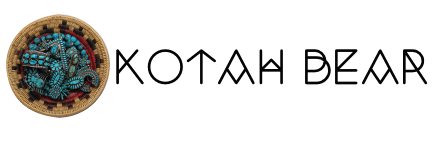A Short History of Trade Blankets
Blankets have always been interwoven into every aspect of Native American life. Before colonization, people would make them from buffalo hides, other animal hides and pelts, or handwoven plant fibers. Blankets would mark special occasions such as births, marriages, etc. They would be used as a form of payment, indicate status, or be given as gifts. Different tribes had different styles of blankets and would trade with each other accordingly.
As colonization took hold and and lifeways were disrupted, Native Americans were forced to become reliant on European traders for goods, including blankets. A quality wool blanket became an important product for these traders to have in their inventory.
As trading posts expanded locations and offerings, blanket manufacturers realized their new Native American customers wanted to purchase blankets that were beautiful, as well as practical. Many of the woolen mills who manufactured blankets sent their designers to travel and live among the various tribes to see what designs would appeal the most to their new customer base.
An example that will most likely be known is Pendleton Woolen Mills. This company was founded in 1896 to specifically produce trade blankets. They are the one such historic company that is still in business today. Currently, Pendleton blankets are widely used in Native American communities and are generally seen as appropriate gifts for important occasions etc.
At Kotah Bear, we received a his and hers Pendleton blanket set as a wedding present. We are familiar with the evolution of the trade blanket from wool, to fleece, and now this plush material. While in New Mexico some years ago, we came across our current plush trade blankets. We loved how plush, soft, and beautiful they were and knew you all would too! They have proved to be great products.
The history and current status of trade blankets is a complicated one. We feel fortunate to sell them, as our blanket sales directly help us to be able to purchase more Native American jewelry from living artisans to add to our inventory.
We are always happy to hear how much you all love your blankets and hope they'll be well loved for years to come!
For more reading on trade blankets, a comprehensive book is 'Language of the Robe: American Indian Trade Blankets' by Robert W. Kapoun: https://www.amazon.com/Language-Robe-American-Indian-Blankets/dp/0879058110

